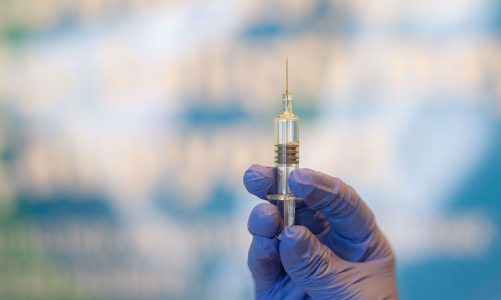The COVID-19 outbreak has been a confusing time for Americans, but one thing has been remarkably clear: The United States is far behind when it comes to testing people for coronavirus.
Although Vice President Mike Pence promised last week that “approximately 1.5 million tests” would soon be available, an ongoing Atlantic investigation can only confirm that 13,953 tests have been conducted nationwide. New York, which has shut down Broadway and has at least 328 coronavirus cases, continues to not screen patients with worrisome symptoms. As late as March 6, a busy clinic in Brownsville, Texas, a border city of nearly 200,000 whose population crosses from one side of Mexico to the other frequently, told me they could only test three people. By comparison, South Korea, which has one of the largest outbreaks outside of China, is testing nearly 20,000 people a day.

Testing is essential to identify infected people and to understand the true extent of the outbreak. But when initial testing by the Centers for Disease Control and Prevention rolled out to state public health laboratories in early February, one of its components was found to be defective. Since then, academic, clinical and other laboratories have had difficulty obtaining or performing new tests and diagnosing patients.
Although some elements of the collapse are now understood, the full scale of the difficulties laboratory directors have faced has largely remained opaque. Interviews with laboratory directors and public health experts reveal a cascade of problems similar to the Fyre Festival that has led to a shortage of tests at a time when the United States desperately needs them. The problems began with onerous requirements for the laboratories conducting the tests, continued due to arcane obstacles that prevented researchers from obtaining adequate supplies, and spilled over into a White House that appeared to lack cohesion in the early days of the pandemic. Performing many tests for a new disease is a great logistical and scientific challenge, but it can be achieved with the help of highly efficient and effective government leadership. In this case, that leadership did not appear to exist.
These are the top four reasons why testing problems have been so severe
RED TAPE
The Food and Drug Administration has a protocol called Emergency Use Authorization, or USA, through which it clears tests from laboratories across the country for use in an outbreak. Putting more of these tests to work would greatly increase the ability of physicians and public health officials to screen patients for the coronavirus.
Former FDA officials I spoke with said that during previous outbreaks, the US could be granted in just a couple of days. But this time, the requirements for obtaining a USU were so complicated that it would have taken weeks to receive one, says Alex Greninger, deputy director of the virology division at the University of Washington Medical Center, which is near the heart of the US outbreak. . Greninger told me that clinical labs were not allowed to start testing prior to receiving the EUA, even if they had already made sure their tests worked internally. Although these regulations exist to ensure that faulty laboratory tests are not used on patients, several microbiologists told me that they felt the precautions were excessive for a rapid outbreak of this scale.
HARD-TO-GET VIRUS SAMPLES
Labs and companies need samples of the virus itself to perform their tests, but delays in accessing the samples further slowed the test development process. The coronavirus originated in China, and as several microbiologists told me, the Chinese government does not allow the shipment of specimens outside its borders.
Many researchers have had difficulty obtaining samples even when the virus has spread. “I was working on the phones to try to access the virus,” Greninger said.
BioMérieux just released three versions of its coronavirus test this week, after starting work on it on January 23. Miller says that with every viral outbreak, the company’s biggest problem by far is getting access to viruses and patient samples so it can validate its tests. . Even when working with non-authoritarian countries, a combination of government processes, researcher reluctance, complex shipping regulations, and concerns about patient privacy make it difficult for diagnostic companies like yours to obtain samples.
LACKING EQUIPMENT
The type of test that Greninger performs is called a laboratory-developed test. To be used in other laboratories, your test requires special instruments that extract and then amplify the RNA that makes up the virus. However, labs across the country, like those in many county hospitals, don’t have the tools to do this. They can only run a simple type of test called a sample response test. As late as this week, several laboratory directors told me that response sample versions of the coronavirus test had not been approved in the US “That means the vast majority of clinical laboratories in this country will not be able to perform home testing right now, ”says Susan Butler Wu, associate professor of clinical pathology at the University of Southern California.
The US health care system is divided into state and county public health laboratories, which have different equipment than academic research institutions, which have different equipment than hospitals that diagnose patients. So the same test won’t necessarily work in different places.
LEADERSHIP AND COORDINATION PROBLEMS
For months, President Trump has downplayed the coronavirus, telling attendees at a Black History Month reception, for example, that perhaps the virus could miraculously disappear. He claimed on Twitter that the United States has done a “great job” in handling the outbreak. It seems unlikely that such an arrogant attitude motivated health officials to take things seriously. It also contradicted the advice of most public health experts.



